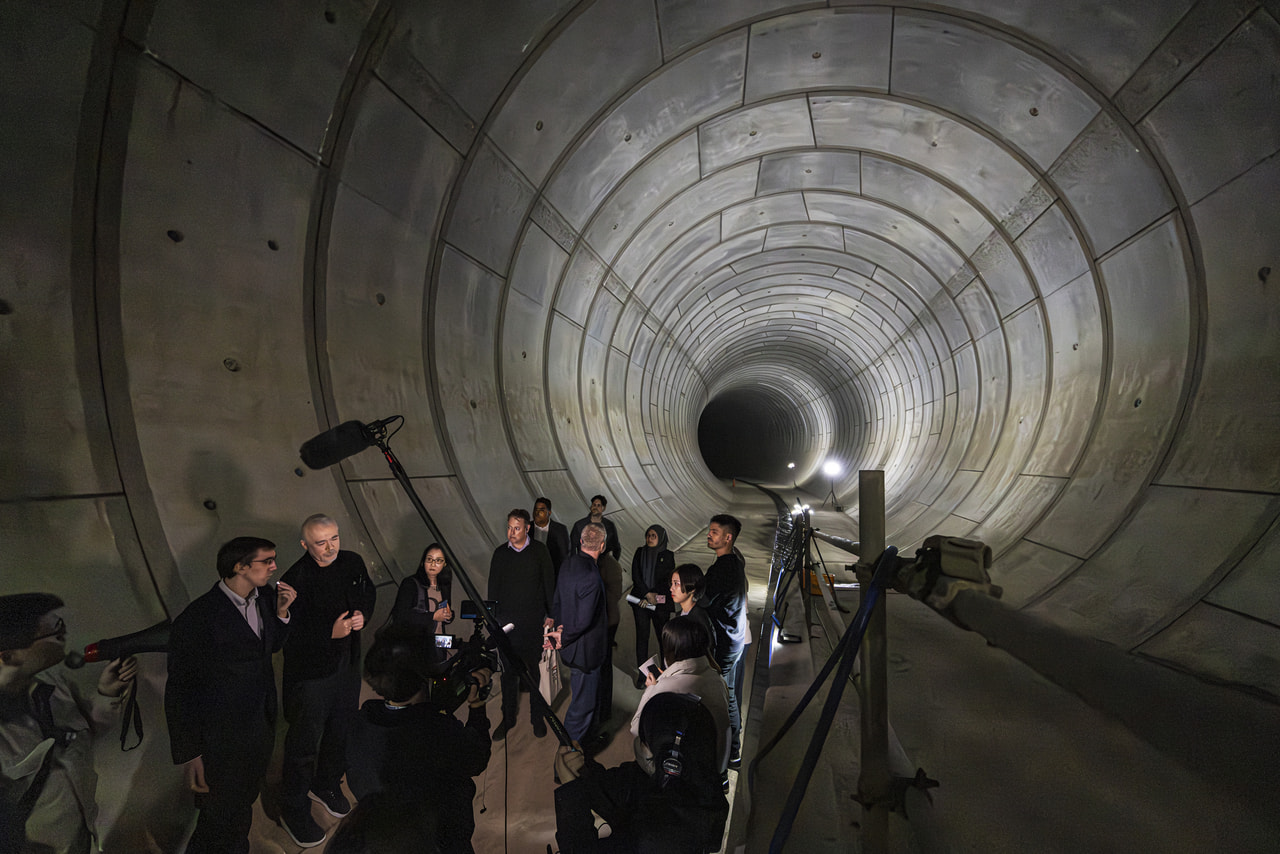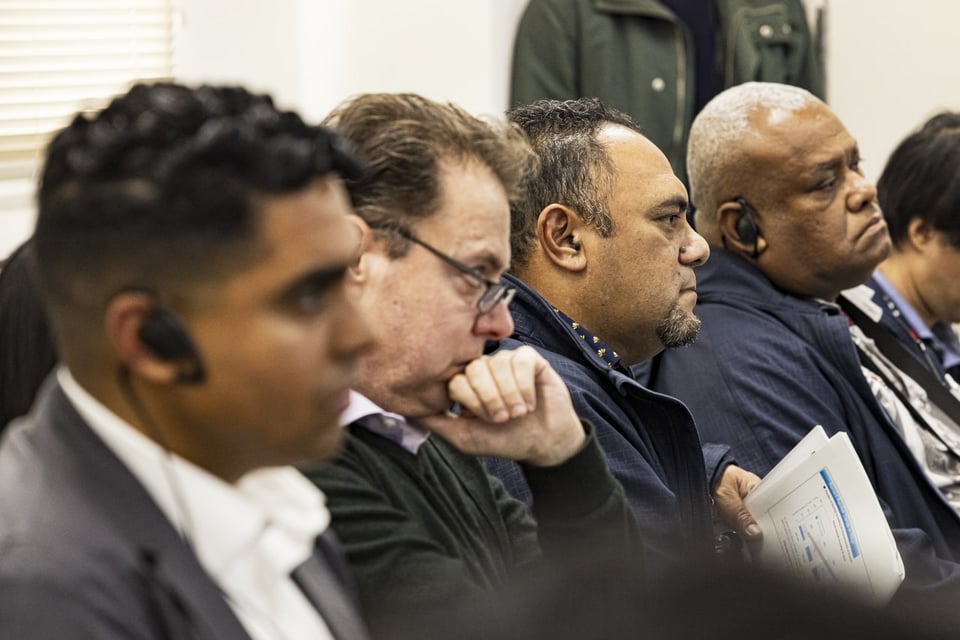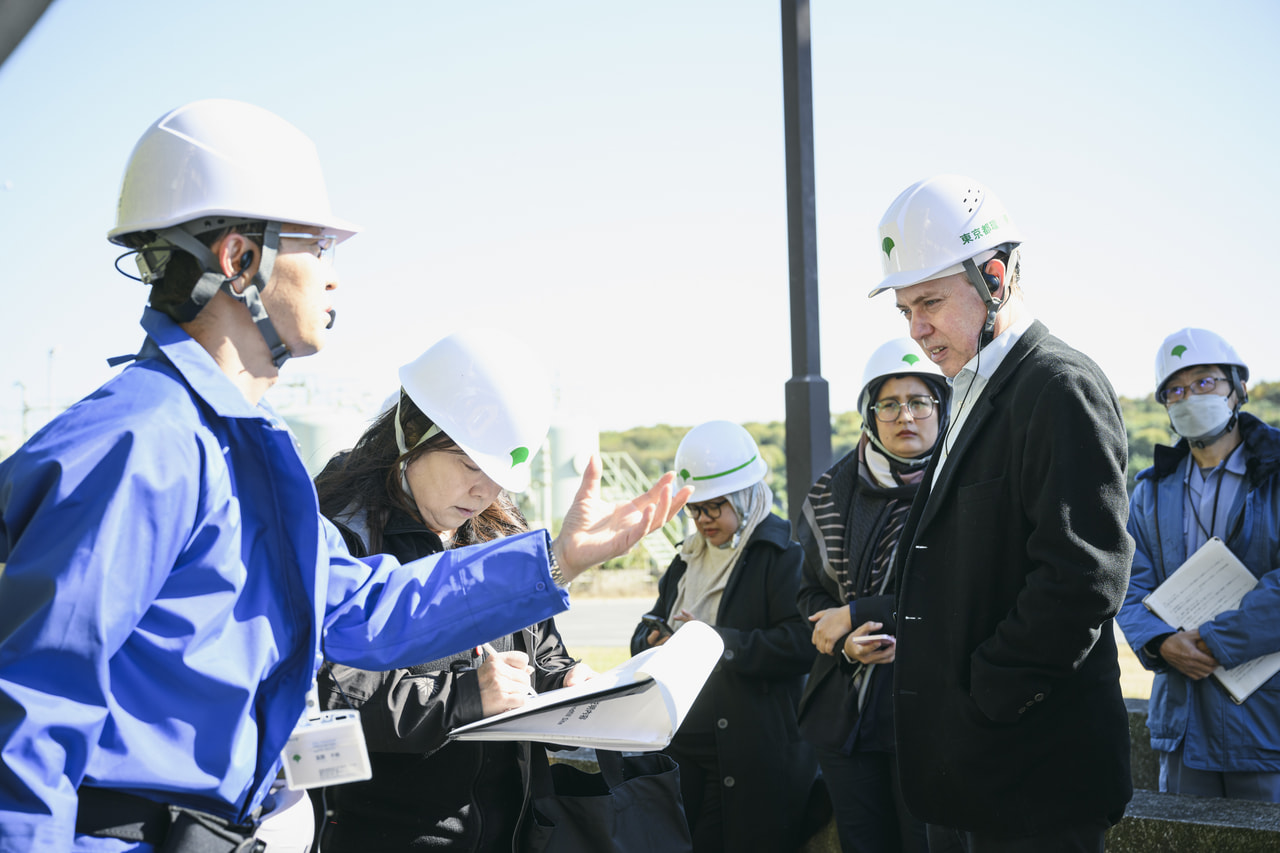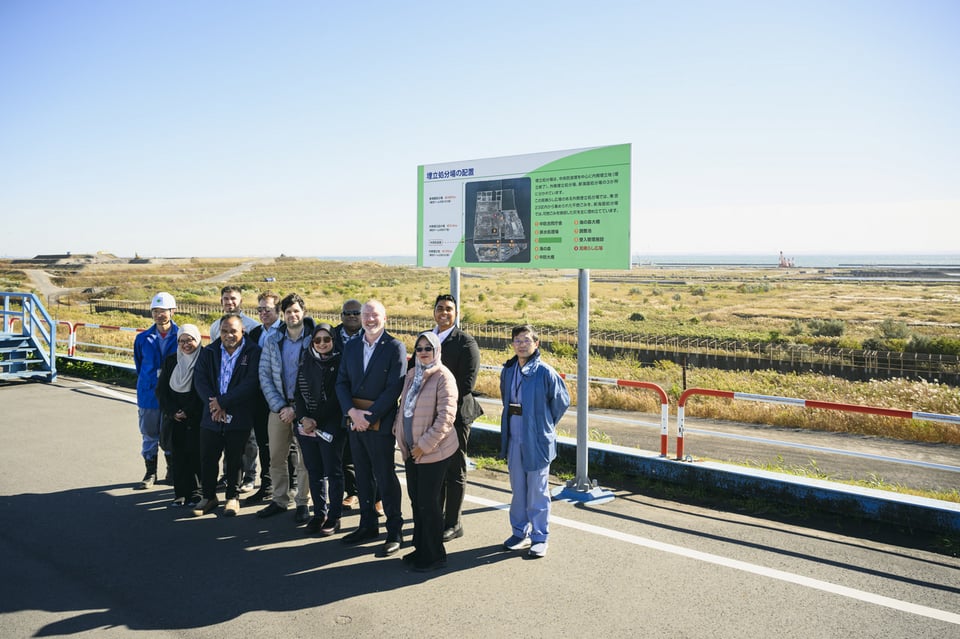
November 29, 2024
Working-Level Staff from 7 Cities Visit Tokyo: Insights into Waste Management and Flood Control Facilities

The Bikuni Bridge Upstream Regulating Reservoir, Bikuni Bridge Downstream Regulating Reservoir, and Shirako River Underground Regulating Reservoir collectively store approximately 450,000 m³ of floodwater, significantly reducing flood risks during heavy rainfall.
As part of G-NETS working group joint projects, working-level staff from seven cities participated in a technical site visit hosted by the Tokyo Metropolitan Government in November, 2024. On November 28, participants observed waste management facilities focused on reducing environmental impact. On November 29, they explored cool pavement technologies designed to counter rising road temperatures and toured underground flood control reservoirs built to mitigate flood risks. Discussions and knowledge-sharing sessions followed the site visits.
Shared Challenges
-
Waste management, treatment, and recycling strategies
-
Measures to mitigate the urban heat island (UHI) effect and control flooding in response to climate change
Key Site Visits
[November 28, 2024]
・Tokyo Metropolitan Government Waste Landfill Site
At the TMG Waste Landfill Site, waste that has undergone intermediate processing, including incineration and pulverization, is buried. During the visit, participants observed facilities utilizing landfill gas generated from decomposing waste for electricity generation, as well as initiatives to properly treat leachate.
・Tokyo Super Eco Town
TMG has been promoting the Super Eco Town Project to tackle waste management issues, encourage the establishment of new environmental industries, and drive the transition toward a circular economy. As part of this initiative, participants visited three waste treatment and recycling facilities involved in the project.
-
A hazardous PCB waste treatment facility that neutralizes toxic substances, converting them into water and salt.
-
A construction and demolition waste recycling facility that processes construction waste, including waste from natural disasters.
-
A food waste recycling and biogas power generation facility that converts food waste into animal feed using a heated oil reduced-pressure dryer and generates electricity through methane fermentation.
[November 29, 2024]
・Bureau of Construction, Tokyo Metropolitan Government
Participants received an explanation on heat-reflective cool pavement and low-carbon asphalt technology.
・Shirako River Underground Regulating Reservoir and Bikuni Bridge Downstream Regulating Reservoir
Participants entered underground regulating reservoirs to learn about flood control measures and expressed amazement at their scale.

Participants listened intently to insights derived from data collected at the Shirako River Underground Regulating Reservoir.
Representatives from the visit’s seven participating cities shared their current reliance on landfills for waste management. In contrast, they noted Tokyo’s low landfill dependency compared to its total waste generation. Participants highlighted the importance of public-private partnerships in solving food waste management issues and expressed interest in adopting a model similar to Tokyo Super Eco Town, a dedicated hub for recycling facilities. Additionally, Shirako River Underground Regulating Reservoir* was recognized as a valuable flood mitigation measure, with participants advocating for ongoing information exchange.
*The Shirako River Underground Regulating Reservoir helps control water levels in the Shakujii and Shirako Rivers by storing excess water during heavy rainfall to prevent flooding.
Participating Cities (Alphabetical Order)
Brisbane
Brampton
Kuala Lumpur
Los Angeles
New South Wales State
Suva
Related Link
Bureau of Environment, Tokyo Metropolitan Government
Bureau of Construction, Tokyo Metropolitan Government

